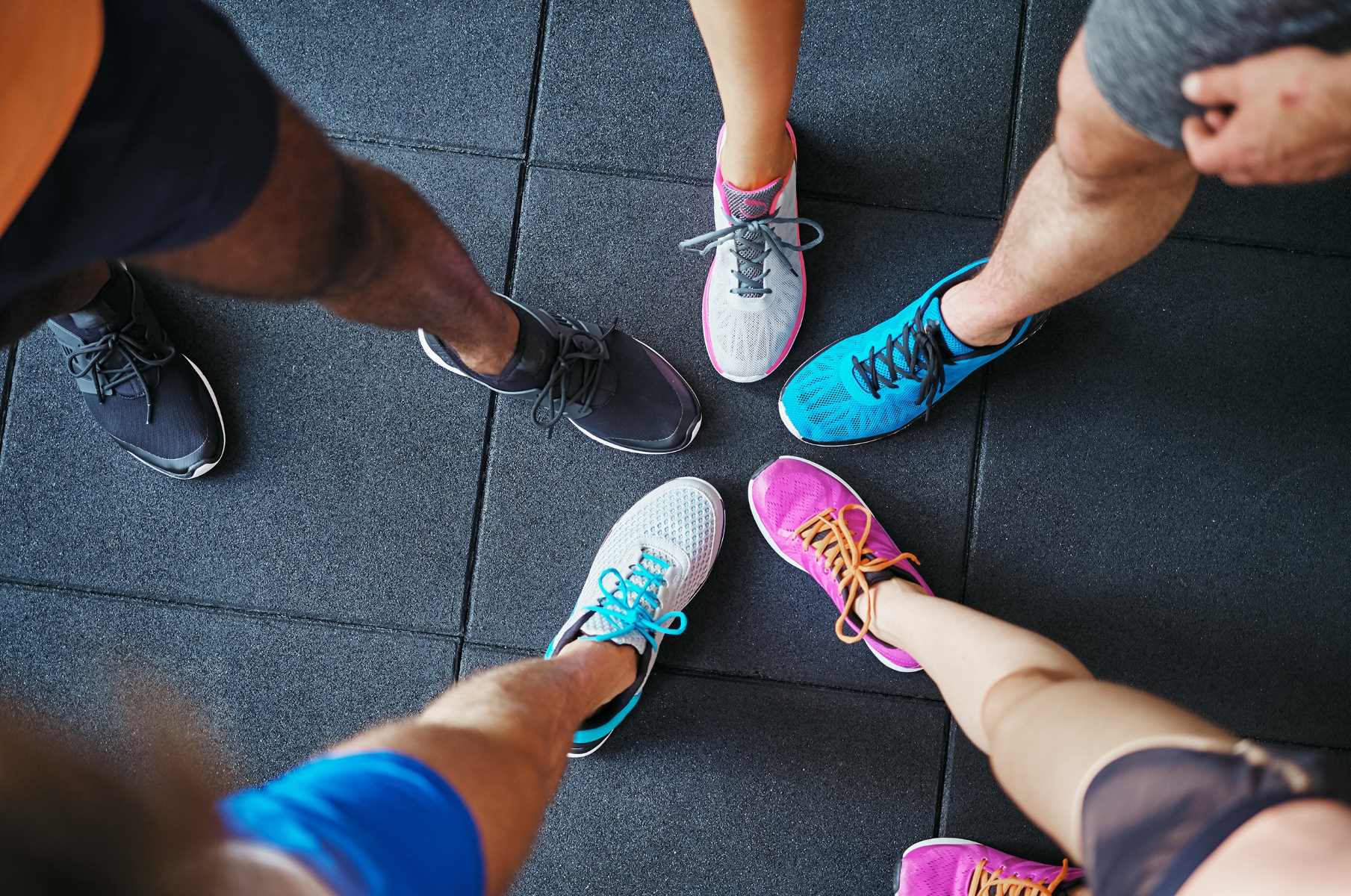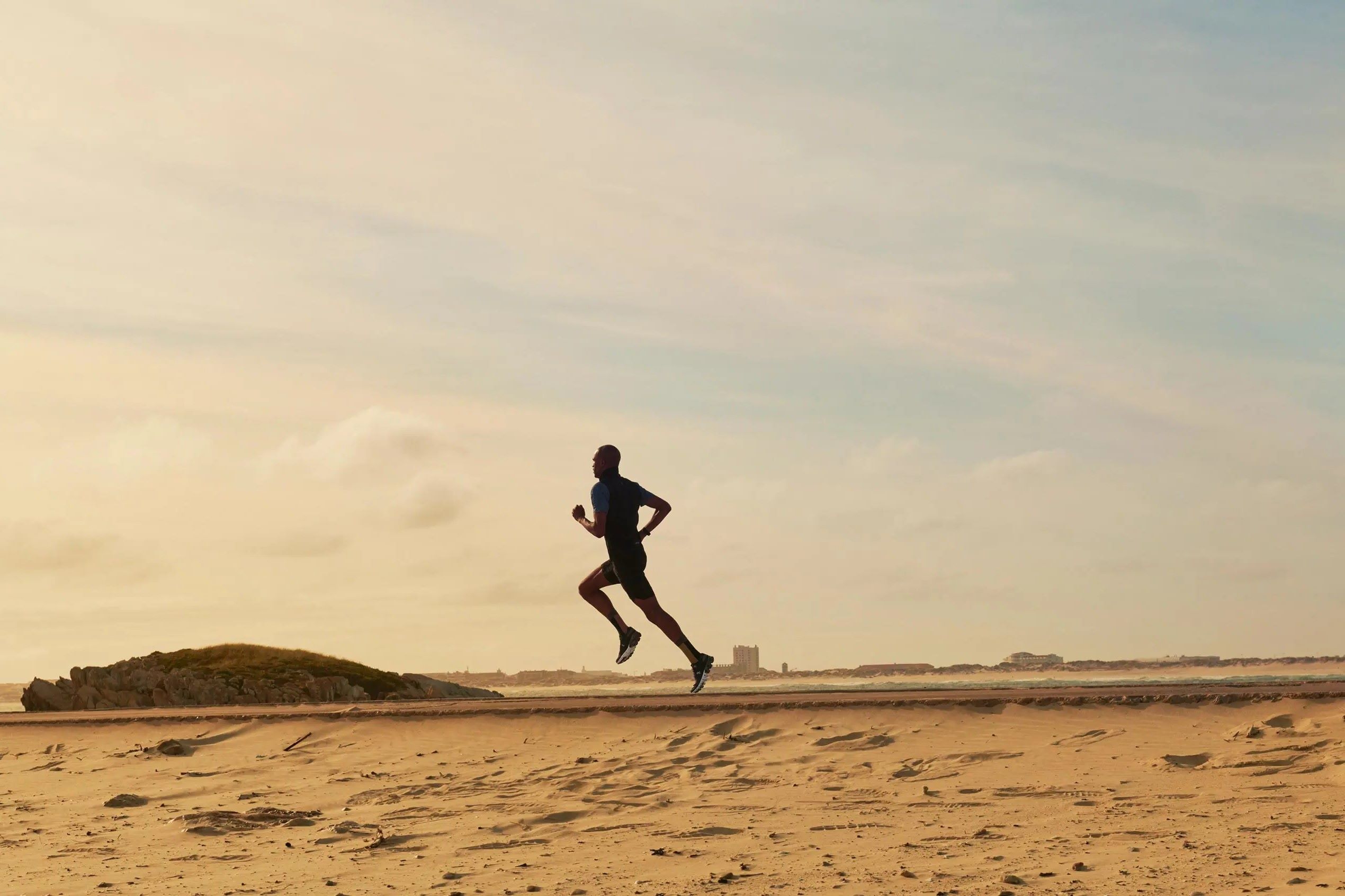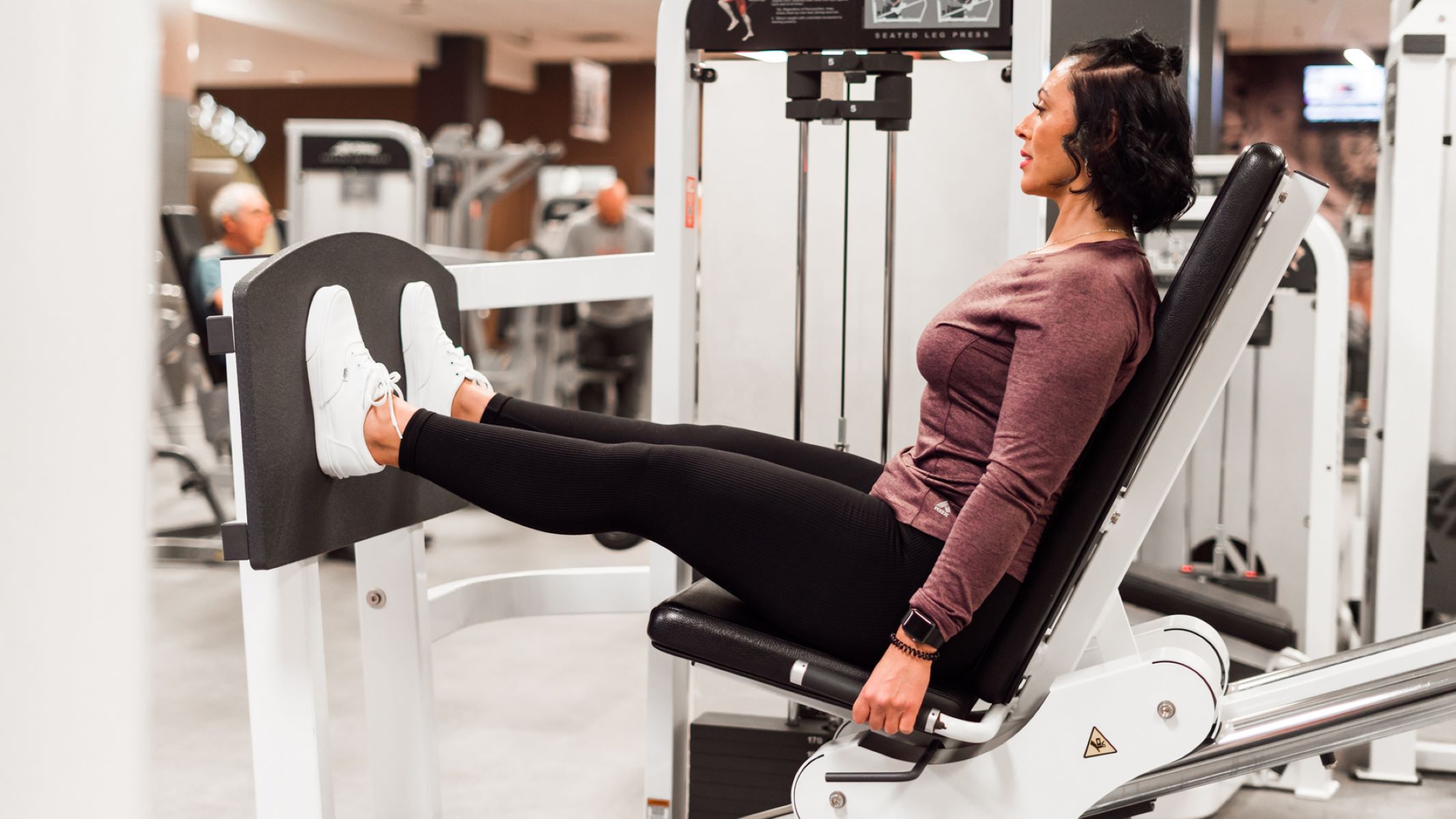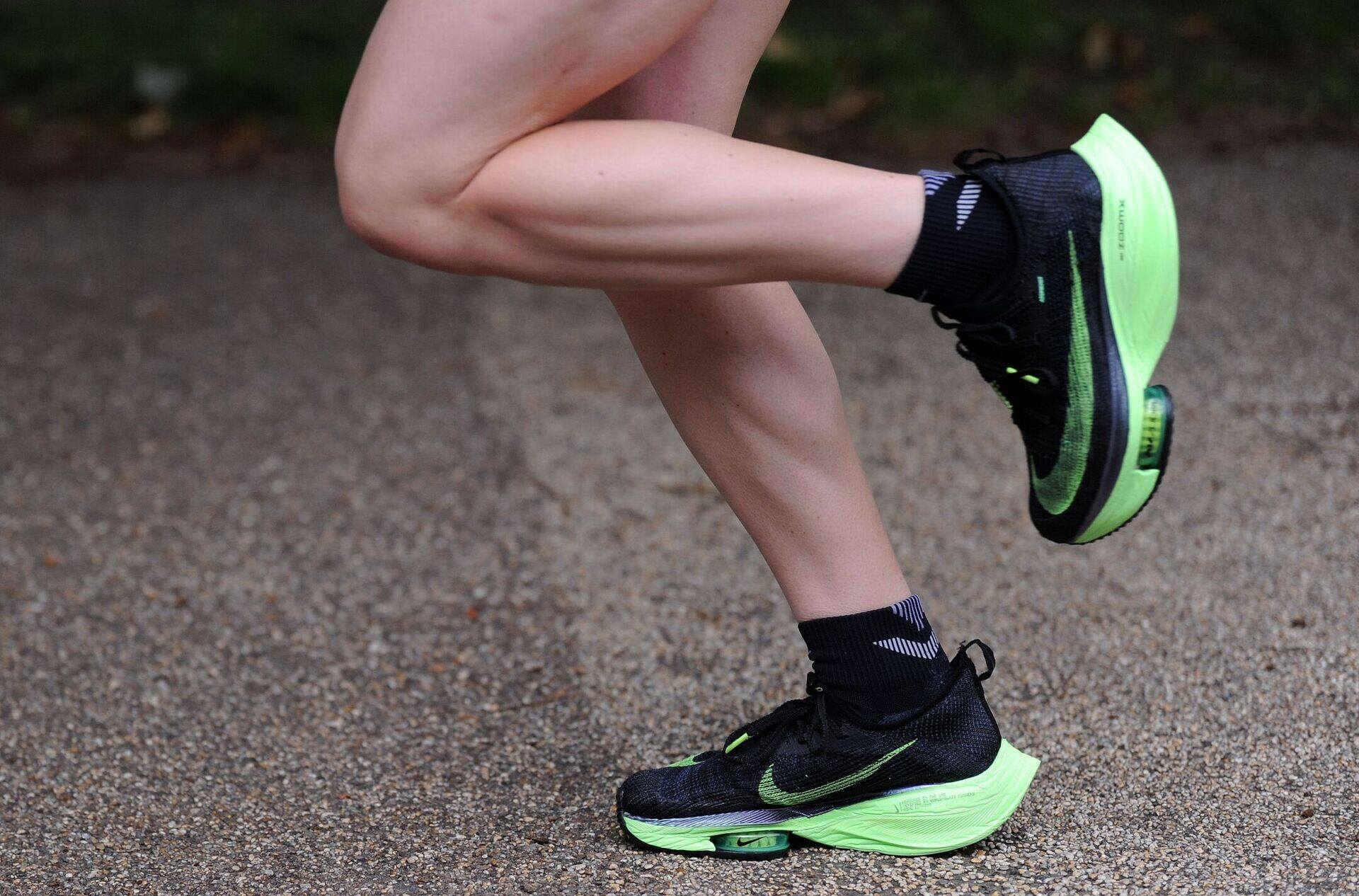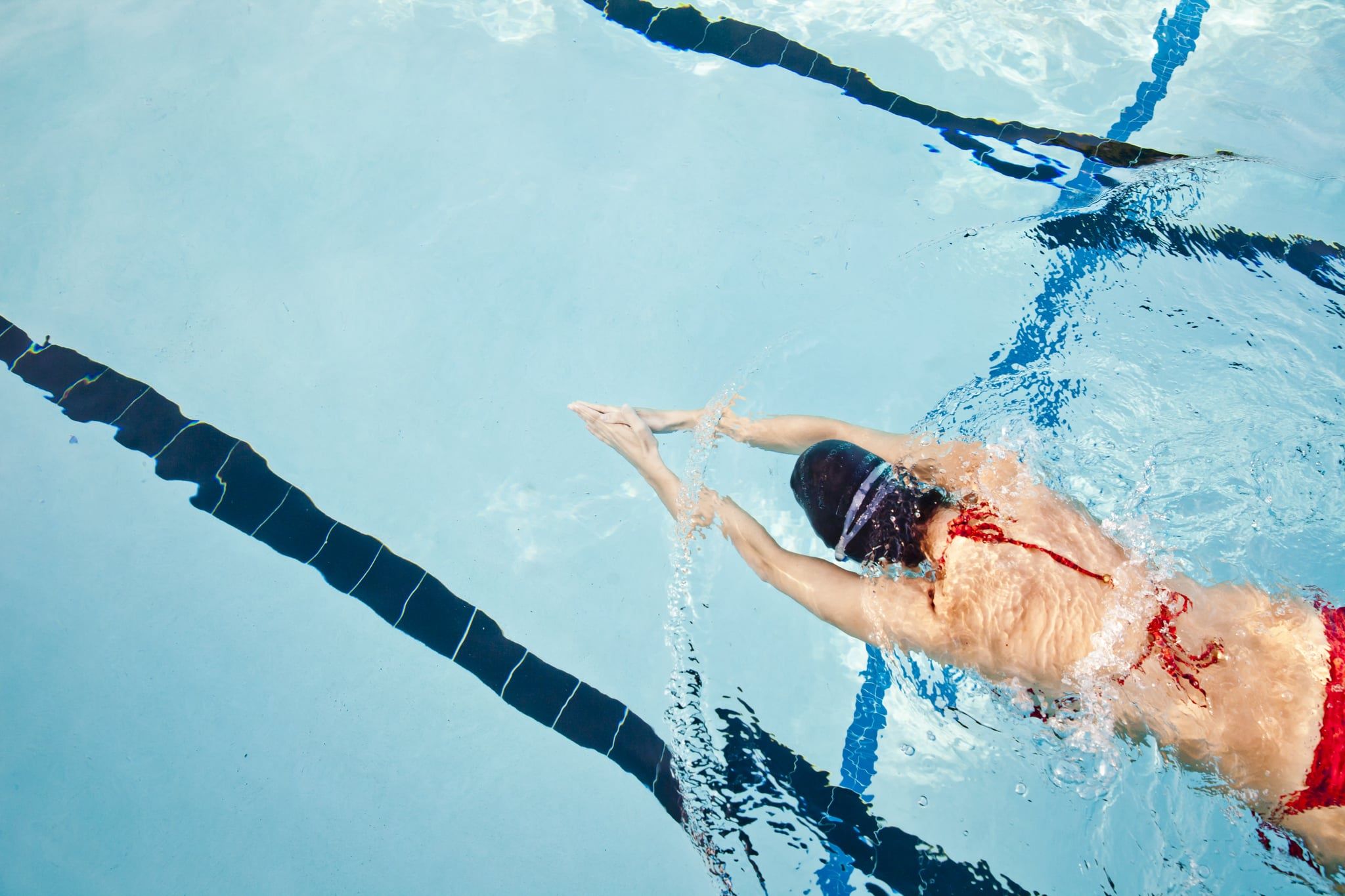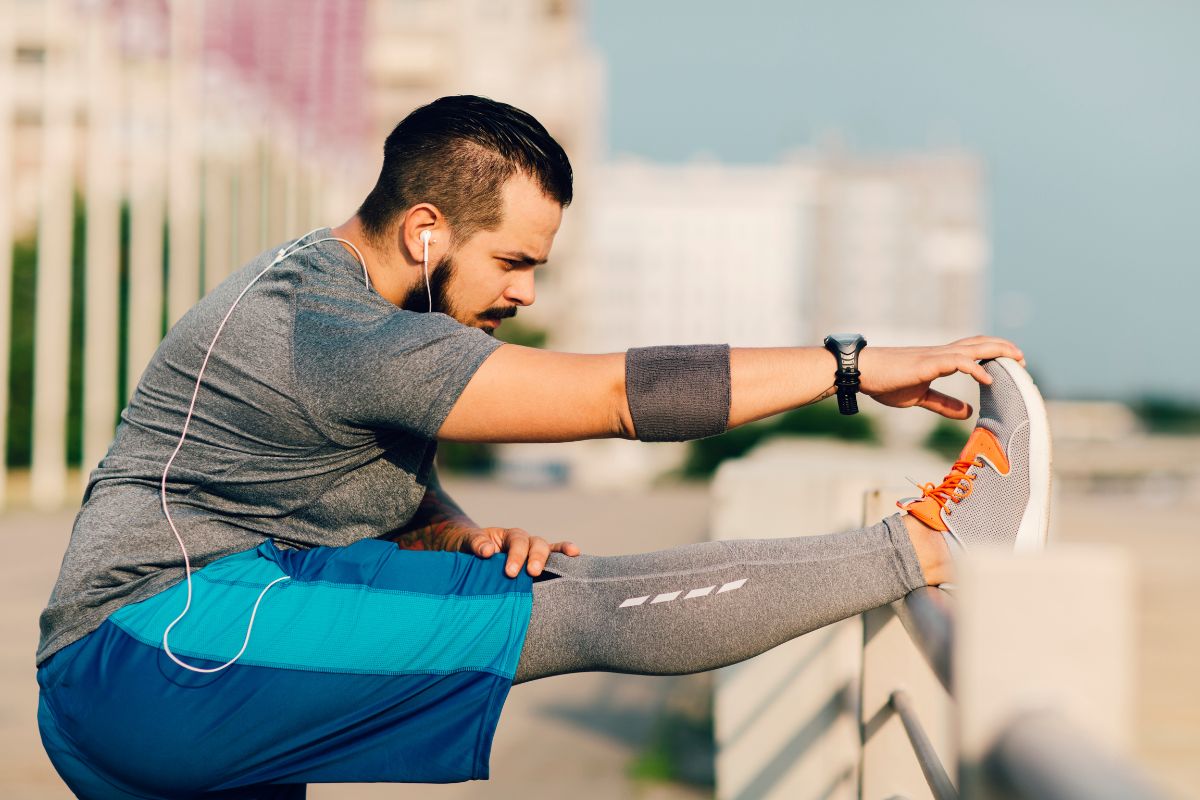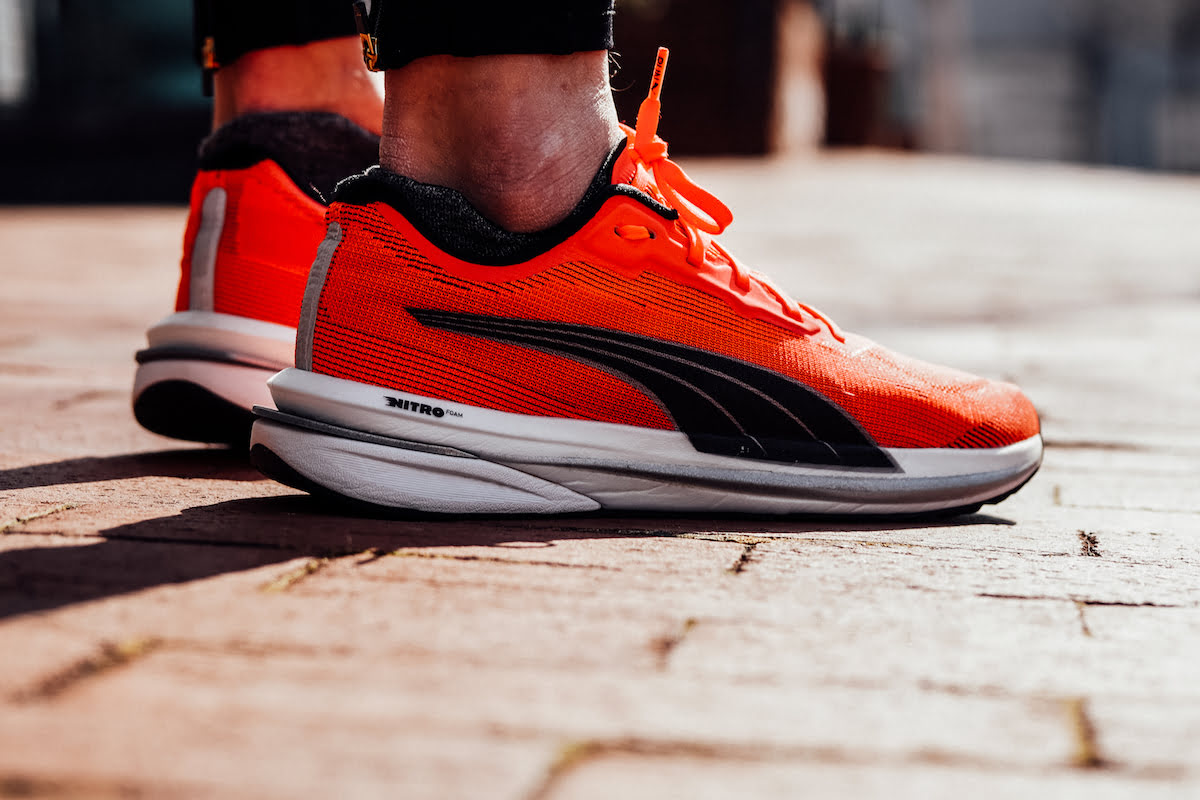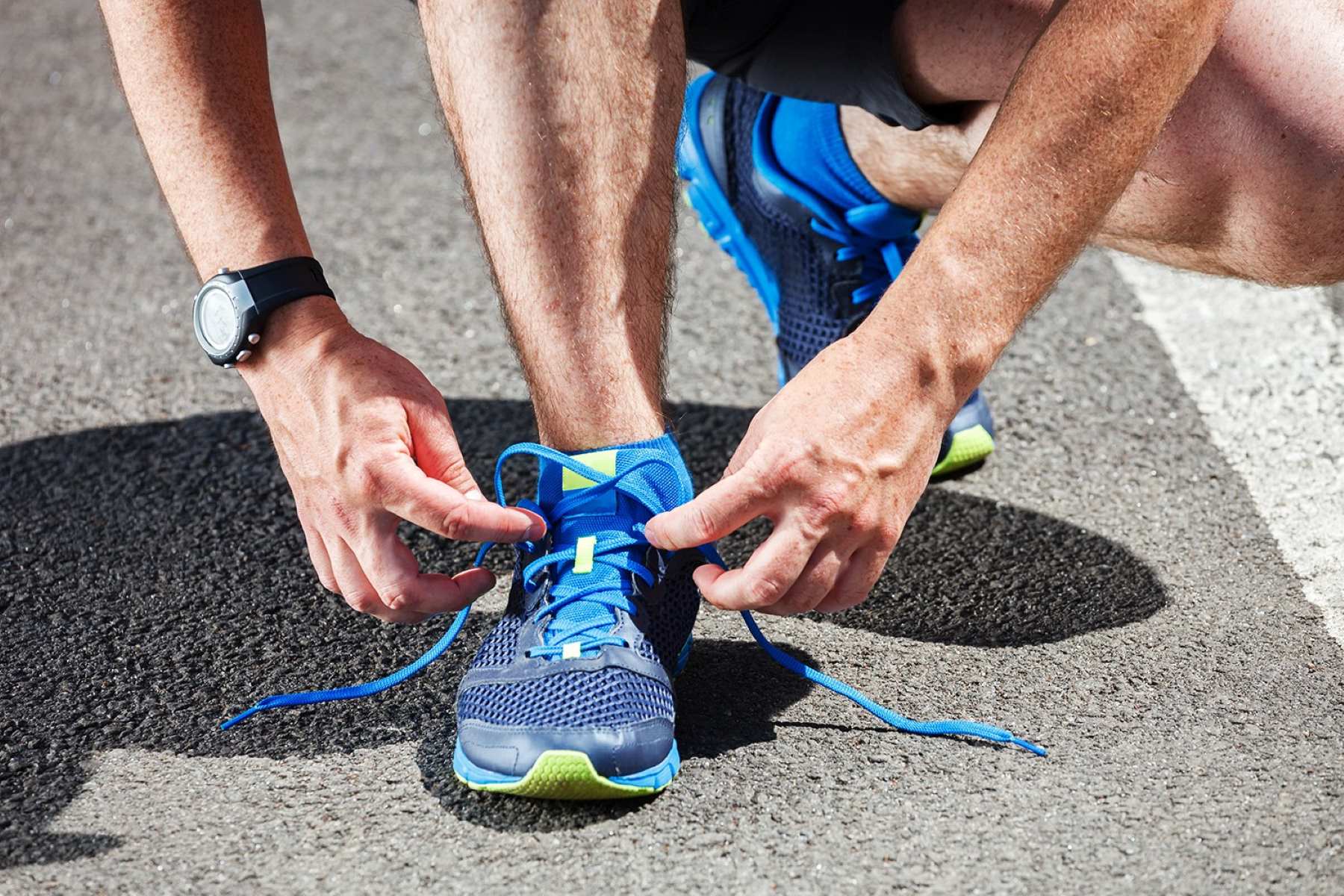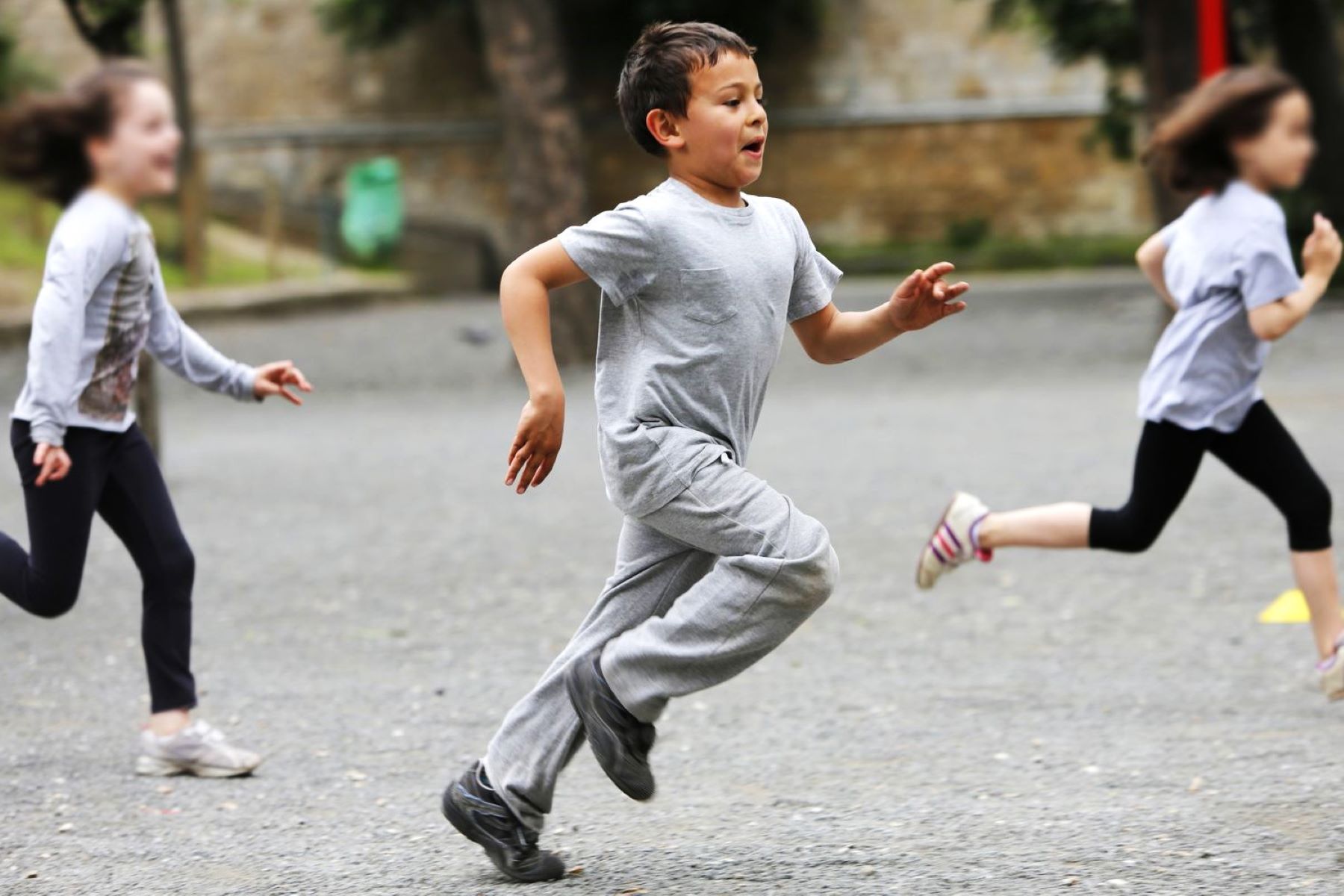Home>Training & Techniques>The Reason Behind Every Runner Possessing A ‘Runner’s Body’


Training & Techniques
The Reason Behind Every Runner Possessing A ‘Runner’s Body’
Published: February 28, 2024
Discover the training and techniques behind achieving a 'runner's body' and the reasons why every runner possesses one. Uncover the secrets to building and maintaining a strong, lean physique.
(Many of the links in this article redirect to a specific reviewed product. Your purchase of these products through affiliate links helps to generate commission for Therunningadvisor.com, at no extra cost. Learn more)
Table of Contents
The Science of a Runner's Body
The physical appearance of a runner's body is a testament to the remarkable physiological changes that occur in response to regular running. This transformation is not merely superficial; it reflects the intricate adaptations taking place within the body at a cellular and molecular level.
When an individual engages in regular running, the body undergoes a series of remarkable changes. One of the most notable adaptations is the development of lean muscle mass. As the muscles repeatedly contract and extend during running, they undergo microtears, prompting the body to repair and rebuild them. Over time, this process leads to the growth and strengthening of muscles, resulting in a lean and toned physique characteristic of dedicated runners.
Moreover, running stimulates the body to increase its red blood cell count. This is a crucial adaptation as it enhances the body's ability to transport oxygen to the muscles, thereby improving endurance and overall athletic performance. The increased oxygen delivery also supports the body's recovery process, allowing runners to bounce back more quickly from intense workouts and races.
Furthermore, running triggers the release of endorphins, often referred to as the body's natural "feel-good" hormones. These neurotransmitters not only alleviate stress and elevate mood but also contribute to the runner's high, a sensation of euphoria and well-being experienced during and after running. This psychological boost serves as a powerful motivator, encouraging individuals to maintain their running regimen and further sculpt their bodies.
Additionally, running plays a pivotal role in regulating metabolism. The sustained physical exertion of running elevates the body's metabolic rate, leading to increased calorie expenditure. This, in turn, contributes to the reduction of body fat and the development of a leaner physique. The metabolic benefits of running extend beyond the duration of the activity, as the body continues to burn calories at an elevated rate even after the run has concluded, a phenomenon known as excess post-exercise oxygen consumption (EPOC).
In essence, the transformation of an individual's physique into that of a runner's body is underpinned by a complex interplay of physiological adaptations. From the development of lean muscle mass and enhanced oxygen transport to the regulation of metabolism and the release of endorphins, the science behind a runner's body is a testament to the remarkable capabilities of the human body to adapt and thrive in response to regular physical activity.
The Impact of Running on Muscle Composition
The impact of running on muscle composition is profound and multifaceted. When an individual engages in regular running, the muscles undergo a series of remarkable adaptations that contribute to the development of a lean and toned physique. These adaptations are a result of the repetitive and dynamic nature of running, which places significant demands on the musculature.
One of the primary effects of running on muscle composition is the stimulation of muscle growth and strength. As the muscles repeatedly contract and extend during running, they undergo microtears, prompting the body to initiate the repair and rebuilding process. This process, known as muscle hypertrophy, leads to the development of lean muscle mass, contributing to the sculpted appearance commonly associated with dedicated runners. The continuous engagement of muscles during running serves as a potent stimulus for muscle development, particularly in the lower body, including the quadriceps, hamstrings, calves, and glutes.
Moreover, running promotes the development of slow-twitch muscle fibers, which are essential for endurance and sustained physical activity. These fibers are highly resistant to fatigue and are responsible for powering the body through prolonged running sessions. As a result, regular running leads to an increase in the proportion and efficiency of slow-twitch muscle fibers, enhancing the body's capacity for endurance and prolonged exertion.
In addition to muscle growth, running also contributes to the strengthening of connective tissues, such as tendons and ligaments, which play a crucial role in supporting and stabilizing the muscles. The repetitive impact and loading experienced during running stimulate the adaptation and reinforcement of these connective tissues, reducing the risk of injuries and enhancing overall musculoskeletal resilience.
Furthermore, running engages a wide range of muscles throughout the body, including those in the core, upper body, and lower body. This comprehensive engagement promotes overall muscle development and toning, leading to a balanced and well-defined physique. The activation of core muscles during running not only supports posture and stability but also contributes to the development of a strong and resilient core, which is essential for overall athletic performance and injury prevention.
In essence, the impact of running on muscle composition encompasses the development of lean muscle mass, the enhancement of slow-twitch muscle fibers, the strengthening of connective tissues, and the comprehensive engagement of muscles throughout the body. These adaptations collectively contribute to the sculpting of a runner's body, characterized by a lean, toned, and resilient musculature that reflects the remarkable physiological changes induced by regular running.
How Running Shapes the Physique
Running exerts a transformative influence on the physique, sculpting it into a form that reflects the dedication and resilience of the runner. The impact of running on the body's composition and appearance is profound, encompassing both visible changes and underlying physiological adaptations.
At the core of how running shapes the physique lies the development of lean muscle mass. The repetitive and dynamic nature of running places significant demands on the muscles, leading to microtears and subsequent repair and rebuilding. This process, known as muscle hypertrophy, results in the growth and strengthening of muscles, particularly in the lower body. The quadriceps, hamstrings, calves, and glutes undergo significant development, contributing to the sculpted and defined appearance characteristic of dedicated runners.
Furthermore, running promotes the reduction of body fat and the development of a leaner physique. The sustained physical exertion of running elevates the body's metabolic rate, leading to increased calorie expenditure. This, coupled with the phenomenon of excess post-exercise oxygen consumption (EPOC), where the body continues to burn calories at an elevated rate post-run, contributes to the reduction of body fat. As a result, regular running leads to a decrease in overall body fat percentage, unveiling the underlying musculature and enhancing the runner's physique.
In addition to the visible changes in muscle development and fat reduction, running also plays a pivotal role in enhancing overall muscular endurance and toning. The engagement of a wide range of muscles throughout the body, including the core, upper body, and lower body, promotes comprehensive muscle development. The activation of core muscles during running not only supports posture and stability but also contributes to the development of a strong and resilient core, essential for overall athletic performance and injury prevention.
Moreover, running shapes the physique by promoting a balanced and symmetrical appearance. The comprehensive engagement of muscles throughout the body, coupled with the strengthening of connective tissues, contributes to a well-defined and proportionate physique. The development of slow-twitch muscle fibers, essential for endurance and sustained physical activity, further enhances the body's capacity for prolonged exertion, contributing to the overall athletic and sculptural prowess of the runner.
In essence, the transformative impact of running on the physique is a testament to the remarkable physiological adaptations induced by regular running. From the development of lean muscle mass and the reduction of body fat to the enhancement of overall muscular endurance and toning, running shapes the physique into a form that embodies strength, resilience, and dedication.
The Role of Genetics in Developing a Runner's Body
The development of a runner's body is not solely attributed to training and physical activity; genetics also play a significant role in shaping the physique of an individual. While the transformative impact of running on the body is undeniable, the genetic predispositions of an individual can influence the extent and manner in which their physique responds to running and physical exercise.
Genetics contribute to the baseline characteristics that form the foundation of a runner's body. Factors such as body type, muscle fiber composition, and metabolic rate are influenced by genetic predispositions. For instance, individuals with a higher proportion of slow-twitch muscle fibers, which are well-suited for endurance activities like running, may exhibit a natural inclination towards developing a lean and resilient physique conducive to long-distance running. Similarly, variations in metabolic rate and fat distribution, influenced by genetic factors, can impact the ease with which an individual develops and maintains a runner's body.
Moreover, genetic variations in muscle structure and function can influence the degree of muscle hypertrophy and strength development in response to running. Some individuals may possess genetic traits that predispose them to more rapid and pronounced muscle growth, leading to a more visibly defined and sculpted physique as a result of running. Additionally, genetic factors can influence the body's capacity for recovery and adaptation, impacting the rate at which muscle repair and rebuilding occur following running sessions, ultimately shaping the overall muscular composition of the runner's body.
Furthermore, genetic predispositions can influence injury susceptibility and musculoskeletal resilience, which are crucial factors in the development and maintenance of a runner's body. Variations in connective tissue strength, joint stability, and bone density, influenced by genetic factors, can impact the body's ability to withstand the repetitive impact and loading experienced during running. Individuals with genetic predispositions for enhanced musculoskeletal resilience may exhibit a lower risk of injuries and a greater capacity for sustained running, contributing to the development of a robust and enduring runner's body.
In essence, while the impact of genetics on the development of a runner's body is undeniable, it is essential to recognize that genetic predispositions do not predetermine an individual's athletic potential. Rather, genetics interact with training, nutrition, and lifestyle factors to shape the ultimate expression of a runner's body. Understanding the interplay between genetics and environmental influences provides valuable insights into the diverse manifestations of a runner's body and underscores the unique and multifaceted nature of athletic development.
The Psychological and Emotional Benefits of Running
The psychological and emotional benefits of running extend far beyond the physical realm, encompassing a profound impact on mental well-being and emotional resilience. Engaging in regular running not only strengthens the body but also nurtures the mind, offering a myriad of psychological and emotional rewards that contribute to overall holistic wellness.
Running serves as a powerful outlet for stress relief and emotional regulation. The rhythmic motion and repetitive nature of running create a meditative experience, allowing individuals to enter a state of flow where the mind transcends daily stressors and distractions. This meditative aspect of running fosters mental clarity, relaxation, and a sense of calm, providing a valuable opportunity for introspection and emotional rejuvenation.
Moreover, running is renowned for its ability to alleviate symptoms of anxiety and depression. The release of endorphins during running, often referred to as the "runner's high," generates feelings of euphoria and well-being, serving as a natural mood enhancer. This neurochemical response not only uplifts the spirits but also mitigates the impact of stress and anxiety, offering a respite from the challenges of daily life.
Furthermore, running promotes a sense of empowerment and self-efficacy, bolstering confidence and self-esteem. Setting and achieving running-related goals, whether it be completing a certain distance, improving pace, or conquering challenging terrains, instills a sense of accomplishment and resilience. This sense of achievement transcends the realm of running, permeating other aspects of life and fostering a positive mindset and a belief in one's capabilities.
Additionally, running fosters social connections and a sense of community, contributing to emotional well-being. Whether through group runs, running clubs, or participation in organized races, runners often form supportive networks and meaningful connections with like-minded individuals. This sense of camaraderie and belonging nurtures emotional resilience and provides a source of encouragement and motivation, enhancing overall psychological well-being.
Moreover, running serves as a coping mechanism during times of adversity and uncertainty. The discipline, determination, and perseverance cultivated through running translate into valuable coping skills that can be applied to navigate life's challenges. The resilience developed through running equips individuals with the emotional fortitude to confront and overcome obstacles, fostering a sense of inner strength and adaptability.
In essence, the psychological and emotional benefits of running are profound and multifaceted, encompassing stress relief, mood enhancement, empowerment, social connection, and resilience. The transformative impact of running extends beyond physical fitness, nurturing mental well-being and emotional equilibrium, and empowering individuals to lead balanced and fulfilling lives.

